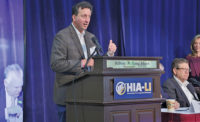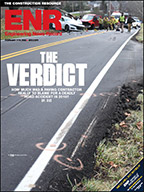

An insurer that reportedly paid out $1 million to the owner of a small private jet that crashed on a Georgia airport runway in 2012 is suing the airport and a contractor that reconstructed the runway. The insurer claims the runway was improperly built.
To win its case, the insurer, Old Republic Insurance, will apparently have to disprove part or all of a National Transportation Safety Board investigation of the crash at Macon Downtown Airport. The investigation found no flaw in the runway and blamed the mishap on the pilot coming in for a landing too fast.
The effort may be worth making for the insurer. If the defendants believe they could be found liable for part of the damage to the aircraft, which is allowed under Georgia law, they may prefer to settle rather than risk losing a court decision and being ordered to pay for damage to the aircraft. That is the strategy behind many lawsuits where settlement is the goal.
States have different ways of dividing up liability and damage awards.
According research compiled by Matthiesen, Wickert & Lehrer, a law firm in Harford, Wisc., Georgia has a statute that provides for modified comparative fault, which allows liability to be divided and a 50% bar rule. The 50% bar rule means a damaged party cannot recover if it is 50% or more at fault, but if it is 49% or less at fault, it can recover in an amount reduced by its degree of fault, according to the Matthiesen law firm.
Old Republic has filed suit against Macon-Bibb County, owner of the airport, and Atlanta-based Robert and Company, the contractor that reconstructed the runway in 2008.
Reports of the lawsuit originally appeared in Bibb County, Ga., and Macon news media.
According to The Telegraph, a local newspaper, the 1986 Beech 400 private jet hydroplaned off the runway during its landing, traveled down an embankment and across a road and crashed in some trees on September 18, 2012. The pilot was trapped in the plane and had to be cut out of it by firefighters. The co-pilot experienced minor injuries along with passenger John Dewberry, an Atlanta real estate developer.
Slope and Notification
Old Republic first sued the City of Macon in November 2013 in Bibb County, but that case was dismissed without prejudice in March 2014. The insurer initiated a new lawsuit June 5 alleging that Robert and Company narrowed and shortened the runway and did not build it with a steep enough slope to prevent water from pooling, according to The Telegraph. The insurance company also allegedly claims that the airport owner failed to notify pilots of these changes to the runway.
The NTSB issued a Probable Cause document at the end of the agency’s investigation in June 2014 in which it pegged the accident to “the pilot’s failure to maintain proper airspeed, which resulted in the airplane touching down too fast on the wet runway with inadequate runway remaining to stop and a subsequent runway overrun."
Contributing to the landing overrun, the report said, were the flight crew's "failure to correctly use the appropriate performance chart to calculate the distance required to stop on a contaminated runway and their general lack of proper crew resource management.”
The NTSB investigators make no mention in their report of the runway’s conformity to safety standards, aside from the proximity of obstacles to the runway.
However, articles in The Telegraph mention a study of the runway after the renovation which found that it sloped less than half of 1% from its center line to its edge in one area. Federal Aviation Administration guidelines call for a 1% to 2% slope.
Robert and Company Chief Executive Michael Kluttz writes in an emailed statement that his company "denies the baseless allegations being alleged by an insurance company seeking to recover monies it paid for the loss of an airplane that was caused solely due to the fault of the pilots as is detailed in the NTSB Factual Report for the incident. Robert and Company intends to vigorously defend itself and expects the claims will be dismissed.”
The $911,293 renovation was primarily funded by the Georgia Dept. of Transportation and the FAA. At the time, the airport was owned by the City of Macon, which also contributed funding. The airport has since been incorporated into Macon-Bibb County.
Documents related to the lawsuit referenced by The Telegraph and filed in Fulton County could not be acquired from the county’s court system or the plaintiff’s Office of General Counsel. An FAA representative could not verify that a study exists for the Macon Downtown Airport runway.






